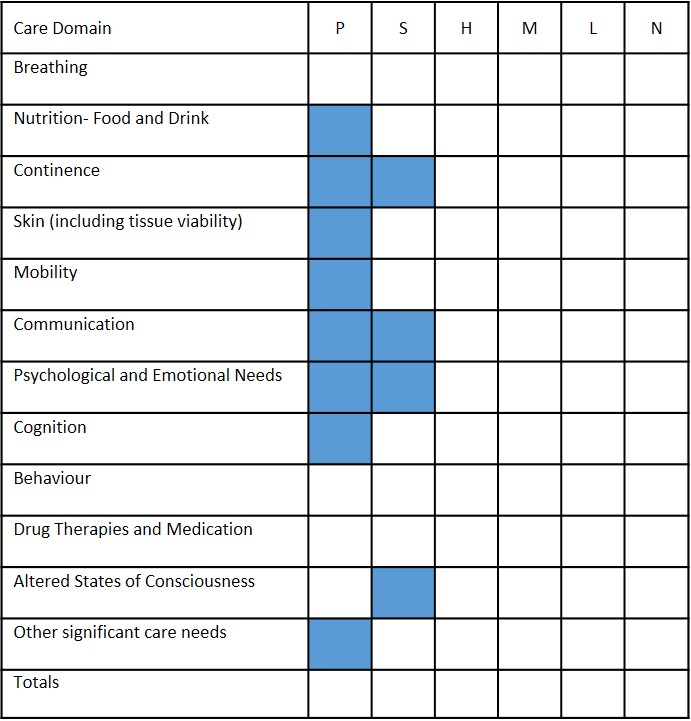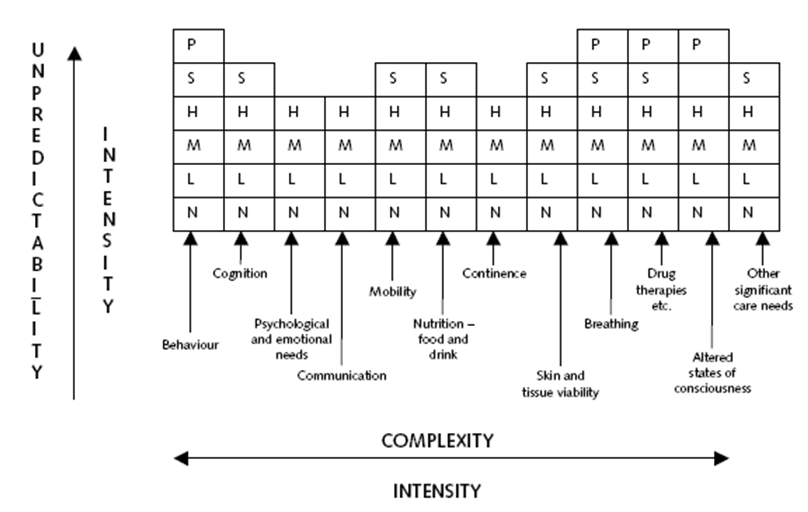Full Assessment for Continuing Healthcare
If you have read our other articles on CHC funding you will already know the assessment process comes in two stages: the Initial CHC Assessment and the Full CHC Assessment. This article will discuss what will happen on the second stage of the CHC Assessment process.
The Full Assessment is much like the Initial Assessment; in many ways it is just a lot more detailed and complex.
The form they will use to complete the assessment is called the CHC Decision Support Tool. It would be worth you looking at a copy of the assessment as you read this article.
What is your involvement in the full CHC Assessment?
Again you will be fully informed and provided with sufficient time to prepare for your assessment. You will have the opportunity to discuss a date for your assessment and get one that is mutually convenient and appropriate.
You have the right to be supported with whoever you would like to be there, this could include district nurse, social worker, specialist therapist or GP if they are happy to support you and attend the meeting. You could also appoint a specialist solicitor who works on CHC funding cases, these can easily be found through a Google search.
This stage is much harder to be successful in, CHC funding is quite difficult to be awarded and the assessment process for this stage is very strict. For that reason I strongly advise you to prepare as fully as possible for you assessment and make sure that everybody that can help you is present at the assessment.
The basic premise of the meeting is that a CHC Nurse Assessor together with at least one other healthcare professional will meet with you and conduct the assessment. They will go through the assessment in a logical fashion and cover each element in turn. But they will only have a small window of time for you to put forward your evidence and show why you are entitled to the funding. Preparation is vital if you are going to be successful.
NHS Continuing Healthcare decision support tool
The form that they will use to determine if you are entitled to CHC Funding is called the Continuing Healthcare Decision Support Tool.
The tool requires the assessors to go through a range of sections that have the same headings as the Initial Assessment. Unlike the Initial Assessment they are not marked on a scale ranging from A to C. Instead they measure the level of need on the following scale:
- Priority
- Severe
- High
- Moderate
- Low
- No Needs
The team will allocate one of the above weightings for each of the domains that were also assessed in the Initial Assessment for CHC Care. To remind you they are as follows:
- Breathing
- Nutrition (food and drink)
- Continence
- Skin (including wounds and ulcers)
- Mobility
- Communication
- Psychological and emotional needs
- Cognition (understanding)
- Behaviour
- Drug therapies and medication
- Altered states of consciousness
- Other significant care needs
The assessors will use the table below to mark the domain scores as they go through the assessment.
The Decision Support Tool (DST) is the technical name for the form (picture above) that the assessors use to assist them to make informed, consistent and fair decisions when assessing an individual’s eligibility for Continuing Healthcare.
What is a Multi-Disciplinary Team?
The Decision Support Tool will be completed by what is known as a Multi-Disciplinary Team or MDT. A MDT is made up of two or more healthcare professionals from different disciplines, they might be nurses, doctors, therapists or Social Workers. The team will always include a CHC Assessment Nurse who will also chair the meeting.
The MDT should usually include both health and social care professionals and where possible they should be people who are knowledgeable and have recently been involved in the assessment, treatment or care of the individual. If face to face meetings are not possible the CCG may use alternatives such as video or tele-conferencing to get all relevant parties’ input.
Even where an individual has not chosen someone else to support or represent them, where consent has been given the views and knowledge of family members should be taken into account.
Completion of the DST should be organised so that the individual understands the process, and receives advice and information to enable them to participate in informed decisions about their future care and support. The reasons for any decisions should be transparent and clearly documented.
How should the DST be used?
The full assessments for NHS Continuing Healthcare are undertaken by a multidisciplinary team (MDT) made up of a minimum of 2 professionals from different healthcare professions. The MDT should usually include both health and social care professionals who are already involved in your care.
All sections of the DST must be completed even if it is to indicate that there are no needs. The Chair of the MDT will look at each section, or domain, in turn. They will invite the individual, their family or other representatives to explain what type of support they need or receive within each category.
They should provide you will enough time to explain all elements of care associated with each domain and allow you the opportunity to present any evidence or supporting information you may have. If this is all a bit confusing and you find it hard to present a coherent and confident case they will prompt and support you. They should be trying to achieve a fair outcome for both the NHS and the individual.
Remember, just because they are looking for a fair outcome this does not mean you should not fully prepare for the assessment. It is vital that you provide evidence and proof that you are entitled to the funding.
As they complete each section they will inform you of the “score” they have allocated to each domain. They have very specific criteria to each weighting and it is possible that what you consider is a severe need only equates to a moderate need when compared to their notes. Find out about criteria the MDT will be using to make their decision. If you disagree, ask them to justify their assessment and challenge it if they have not understood exactly what you or your loved one needs.
As they go through the Decision Support Tool they will mark off the agreed decision for each domain.
Decision Support Tool for NHS Continuing Healthcare
Section 2 – Care Domains
Please refer to the user notes

The descriptors in the DST are examples of the types of need that may be present. They should be carefully considered but may not always accurately describe every individual’s circumstances. The MDT should first determine and record the extent and type of need in the space provided. If there is difficulty in placing the individual’s needs in one or other of the levels, the MDT should use professional judgement based on consideration of all the evidence to decide the most appropriate level.
If, after considering all the relevant evidence, it proves difficult to decide or agree on the level, the MDT should choose the higher of the levels under consideration and record the evidence in relation to both the decision and any significant differences of opinion. The MDT should not record an individual as having needs between levels. It is important that differences of opinion on the appropriate level are based on the evidence available and not on generalised assumptions about the effects of a particular condition or assumptions about the individual’s needs.
**This author of this article is Geraint Williams, he is one of the Directors of Greensleeves Care and a highly experienced healthcare professional. He has worked across a range of different healthcare companies that includes charities and commercial companies and he has filled a number of different roles including Registered Manager of several Residential and Nursing Homes. Geraint has supported a number of different people though the CHC assessment process but he also helped his own family achieve CHC funding so he is well versed in its complexities and challenges.
